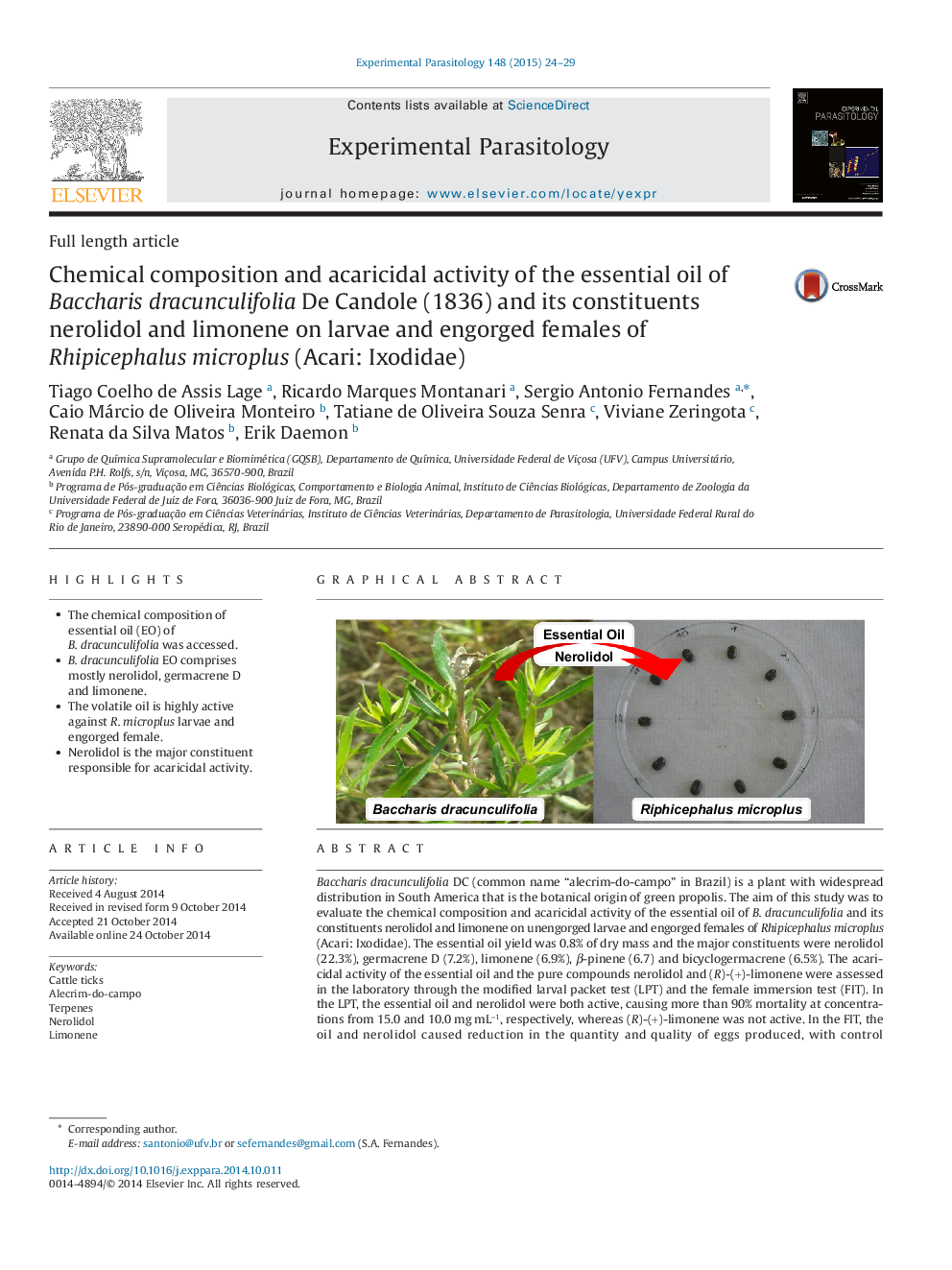| Article ID | Journal | Published Year | Pages | File Type |
|---|---|---|---|---|
| 4371063 | Experimental Parasitology | 2015 | 6 Pages |
•The chemical composition of essential oil (EO) of B. dracunculifolia was accessed.•B. dracunculifolia EO comprises mostly nerolidol, germacrene D and limonene.•The volatile oil is highly active against R. microplus larvae and engorged female.•Nerolidol is the major constituent responsible for acaricidal activity.
Baccharis dracunculifolia DC (common name “alecrim-do-campo” in Brazil) is a plant with widespread distribution in South America that is the botanical origin of green propolis. The aim of this study was to evaluate the chemical composition and acaricidal activity of the essential oil of B. dracunculifolia and its constituents nerolidol and limonene on unengorged larvae and engorged females of Rhipicephalus microplus (Acari: Ixodidae). The essential oil yield was 0.8% of dry mass and the major constituents were nerolidol (22.3%), germacrene D (7.2%), limonene (6.9%), β-pinene (6.7) and bicyclogermacrene (6.5%). The acaricidal activity of the essential oil and the pure compounds nerolidol and (R)-(+)-limonene were assessed in the laboratory through the modified larval packet test (LPT) and the female immersion test (FIT). In the LPT, the essential oil and nerolidol were both active, causing more than 90% mortality at concentrations from 15.0 and 10.0 mg mL−1, respectively, whereas (R)-(+)-limonene was not active. In the FIT, the oil and nerolidol caused reduction in the quantity and quality of eggs produced, with control percentages of 96.3% and 90.3% at concentrations of 60.0 and 50.0 mg mL−1, respectively. It can be concluded that the essential oil obtained from the aerial parts of B. dracunculifolia and its major component nerolidol have high activity on R. microplus larvae and engorged females.
Graphical AbstractFigure optionsDownload full-size imageDownload as PowerPoint slide
